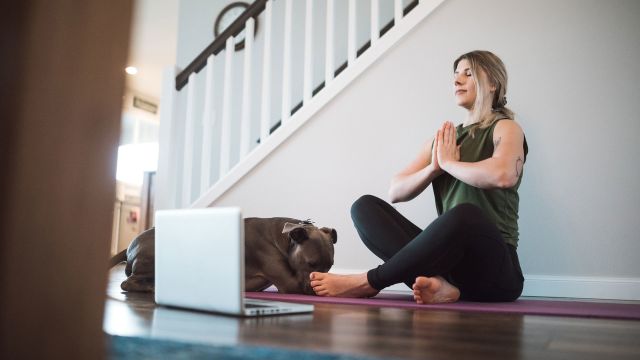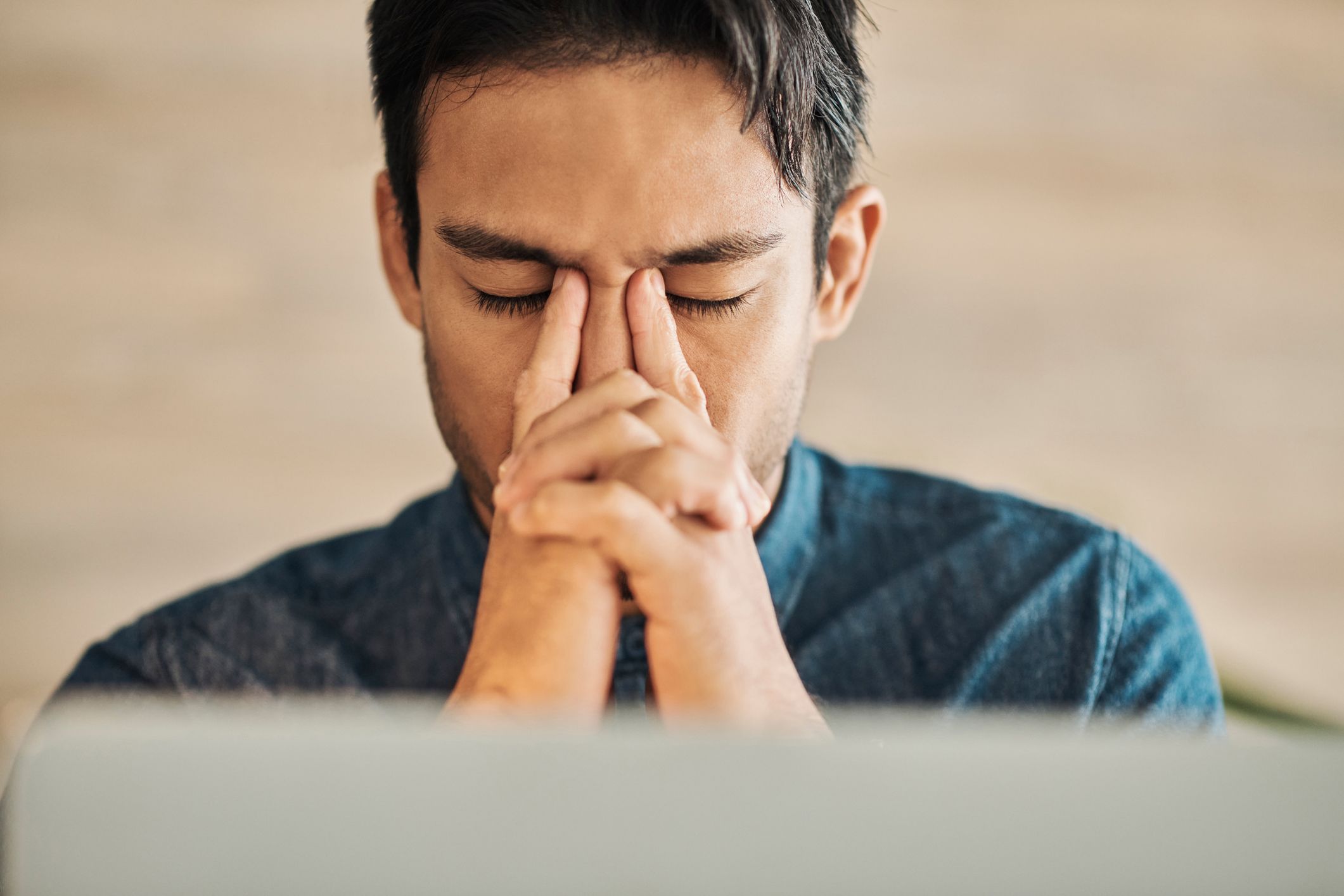Updated on May 23, 2023
Even in the best of times, life often feels like a torrent of to-dos, obligations, and stress. And here’s a tough fact: There is no way to entirely eliminate stressful events from our lives, no matter how much we distract ourselves or try to tune out. But by tuning in more attentively to our experience with an approach called mindfulness, we can develop a more useful response. When we do so, stressful events don’t inevitably lead to ongoing stress.
Mindfulness, defined simply, is awareness that comes from paying attention, on purpose, non-judgmentally, in the present moment.
One of the best ways to learn mindfulness is through meditation. To do so, all you need is a little space, a little quiet, and a little time. What you bring is effort and a curious, open mind. What you get out of it may include lower blood pressure, reduced symptoms of depression, decreased anxiety, less chronic pain, and better sleep—not to mention a more engaged and less stressed life. As a bonus, the people around you may benefit from the more relaxed you.
“Mindfulness helps us change our relationship to stress,” says Jud Brewer, MD, PhD, head of mental and behavioral health at Sharecare and director of research and innovation at Brown University’s Mindfulness Center. “It helps us learn how to relate to our thoughts and emotions differently, so that we can train our minds to let go of reacting to things outside of our control and instead direct our energy toward becoming more resilient.”
Here’s how to set up a daily meditation practice that can provide the foundation for a more mindful life.
Step 1: Starting out
First, identify a time and a place where you can meditate without being interrupted. That may be early in the morning, during your lunch break, or at the end of the day. If you don’t have a dedicated sanctuary, the next best thing is a room with a door you can close. If you’re new to meditation, try to carve out 5 to 10 minutes for each session. You’ll have a better chance of making progress if you practice a little bit every day than if you do it only occasionally.
Sit in an alert, upright, comfortable position on a chair or on the floor. You might use a cushion to help support your spine. Any posture where you are stable and not likely to fall asleep will do.
With your eyes open, briefly take stock of where you are, right now: "I’m sitting in my bedroom. I feel my feet on the floor. The sun is shining through the window." You might remind yourself why you are meditating. Maybe you have an intention to be happier in general or to not yell at your kids this morning at breakfast.
Step 2: Focus on your breath
Next, let your eyes gently close, and bring your attention to the in-and-out flow of your breath at one spot in your body, wherever you feel it moving. This might be the tip of your nose where the air whistles through your nostrils, or your belly rising and falling. Try not to control your breath, just notice it flowing. If you can experience one breath with good focus, great. Now try it again. When your mind wanders from your breath—which it will, repeatedly—gently steer it back.
Given the nature of our minds—constantly darting, fixating on this disappointment from the past or that worry about things to come—it’s an achievement to place concerted attention on a few breaths in a row. Even the most experienced meditators go off the rails. The key is to come back to the breath without judging yourself as a “good” or “bad” meditator.
After sitting for a few minutes, notice if your breathing rate has slowed down, if you feel a little calmer than when you started. If so, great. If not, that’s ok. You have an almost limitless opportunity to practice. Remember that the goal is not to zone out, to escape from reality into a daydream, but to hone in, to fine tune your concentration.
Step 3: Notice sensations in the body
If you spend your first several sessions focusing on the flow of your breath, that’s a great use of time. If each session is a struggle—your mind a riot of voices, reminders, and doubts—that’s natural. Don’t try too hard to quiet your mind. Let it do its thing as you continue steering your attention to your breath. With this gentle effort, you are subtly training your mind to stay present.
As you sit, various body parts will call out for your attention. Once you are comfortable with focusing on your breath, try bringing your awareness to these sensations. You might feel an itch at the back of your neck, an ache in your knee, a throb in your lower back. (If you have a chronic medical condition that requires attention, however, stop meditating and address it.)
Try not to move your body to accommodate these random sensations. Instead, get curious about them and explore what they feel like, just as they are, for as long as they last. Rather than personalizing the feeling (“My aching knee again!”) or attaching an emotion to it (“I hate it when my knee aches!”) try observing each sensation with a bit of curiosity in a non-judgmental way (“Hmm, there’s knee pain.”). As you do so, you’ll begin to see that these sensations inevitably rise, present themselves, then naturally fade away on their own.
Observing this for yourself provides one of the most valuable insights that comes from mindfulness: Bodily sensations are temporary, random, and void of emotion. Discomfort turns into mental suffering, on the other hand, when your mind latches onto the sensation, clinging to it and adding emotion and agitation. The experience of sensation is outside of our control, but your reaction to it is largely within your power to manage.
Step 4: Watch your thoughts
As you continue your daily practice, building on the breath and the sensations in your body, you can begin to observe the thoughts that flash before your mind in a similar manner. There will be plenty; you won’t have far to look.
Watch as each thought appears, enters your consciousness, and calls for your attention. Rather than engage in or explore these thoughts as you’re accustomed to doing, simply see them float by as you would clouds in the sky. You might say to yourself, “Huh, I’m thinking about today’s presentation and what I’ll make for dinner.”
Just as it’s impossible to gather the clouds, don’t try to lasso these thoughts, or worry that you might lose some brilliant brainstorm. They’ll come back. Notice if you find yourself getting lost in a thought, whether rehearsing what you’ll say during that meeting or planning out that menu. Let the thought go and bring your attention back to your breath.
With time and practice, you’ll come to see that thoughts, like sensations in the body, come and go. It’s not the thought itself that might cause you anxiety, but the way in which your mind wants to hang onto it. Once you feel like you’ve gotten the rhythm of meditation, you can consider adding an element of lovingkindness to your routine.
Step 5: Mindfulness in daily life
At the end of a meditation session, whether 5 or 35 minutes, you will likely feel calmer, more at ease, with a clearer and more focused mind. But the benefits aren’t limited to the time you spend sitting. The real power of mindfulness comes when you apply it to the rest of your day.
As your afternoon’s Zoom presentation looms, you might be telling yourself, “My knees are shaking and my heart is racing. I’m freaking out and I’m going to blow it!” But by tapping into your reservoir of mindfulness, you can address those feelings in a productive way, looking at them with a sense of curiosity: “Wow, my body is jazzed about this presentation! Where do I feel it most? In my stomach.” Take a few breaths and realize that the sensation is a reflection of how excited you are to do a great job.
The beauty of mindfulness is that it’s a renewable resource. The stillness you’ve fostered comes from inside. It's continually replenished and you have access to it whenever you need it.
If you need a hand finding your breath or developing a meditation routine, visit Sharecare’s DrJud.com website for more resources. For an immersive, evidence-based mindfulness experience, download the Unwinding by Sharecare mental well-being app.
*Remember that meditation should not be seen as a substitute for regular consultation with a healthcare provider (HCP). If you have a history of depression, PTSD or other mental illness or experience significant mental or physical distress while meditating, stop and consult your HCP.





